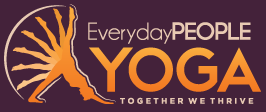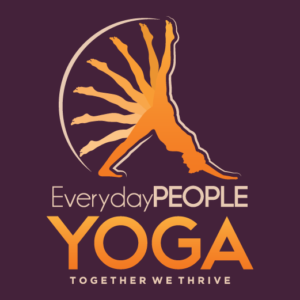Watch tutorials for Shoulderstand and Handstand
21 Day Maui Yoga Teacher Training Retreats Learn More
Think you can’t do a headstand?
For many westerners, the simple thought of standing on one’s head is often enough to trigger subconscious fears. Students may look down at the floor, bite their lips, round their shoulders, etc. In extreme cases, they may even begin to shake uncontrollably, raising their palms in complete refusal.
While there are many possible reasons for these reactions, possibly the most common explanation has to do with control. As adults, we like to feel as if we are in control, not only of ourselves, but also our surroundings. And when we practice headstand, we literally turn our world upside down! We no longer have the familiar comfort of being grounded on our own two feet, where we can most easily interact with our environment. On top of this, there is usually some degree of uncertainty around the idea of balancing most of our body weight on a small circle on the crown of our head. And since many adults already experience tension in their neck and shoulders, they tend to avoid headstand in their yoga practice.
The good news is that these fears are normal. After all, we didn’t grow up learning to walk on our heads! At the same time, headstand is one of those essential poses, or asanas, that every serious student should know. So important is headstand (sirsasana in sanskrit), in fact, that it is referred to as the king of asanas. Ancient rishis, or sages, claimed that every minute spent in a headstand added a day to your life!
The truth is, there is no good reason why nearly every yogi and yogini can’t practice a headstand every day. As long as you keep a few important considerations in mind, not only will you not suffer from head or neck injuries; you will experience a myriad of benefits. These include:
- improved circulation throughout the body
- increased energy levels that tend to last throughout the day
- more strength in the neck, shoulders, and spine
- a brighter complexion
- heightened confidence, as well as a better ability to handle life’s challenges with grace
Students commonly report feelings of tranquility and an overall sense of well-being that flood the body both during, and immediately after practicing headstand. But don’t take our word for it, follow the steps below and learn for yourself!
1. To begin, bring your mat to the nearest wall. Place the shorter edge against the wall.
2. Depending on how thick your mat is, if you are practicing on top of a hardwood or laminate floor. you may wish to fold your mat to double it up for about the first three feet nearest the wall. You can also place a neatly folded blanket near the wall. Either way, try to allow enough room for the length of your forearms plus about six inches.
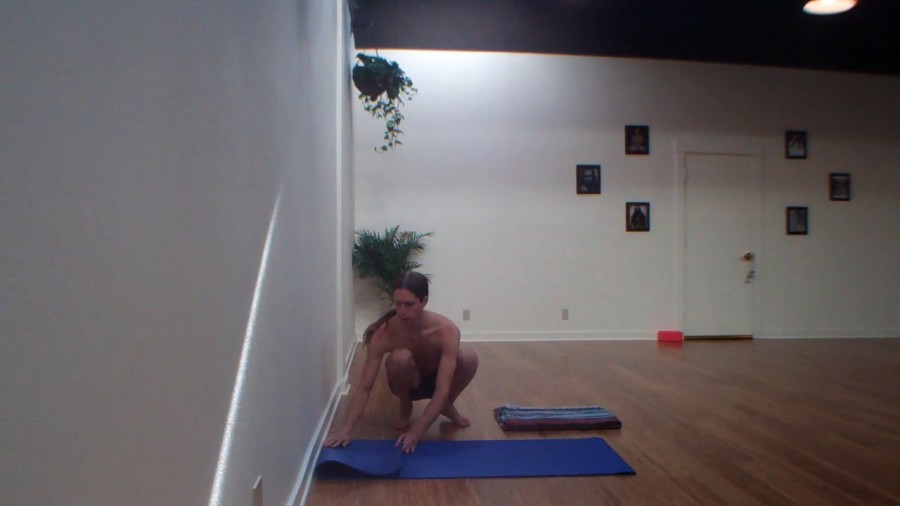
3. Standing on your knees facing the wall, clasp your elbows.
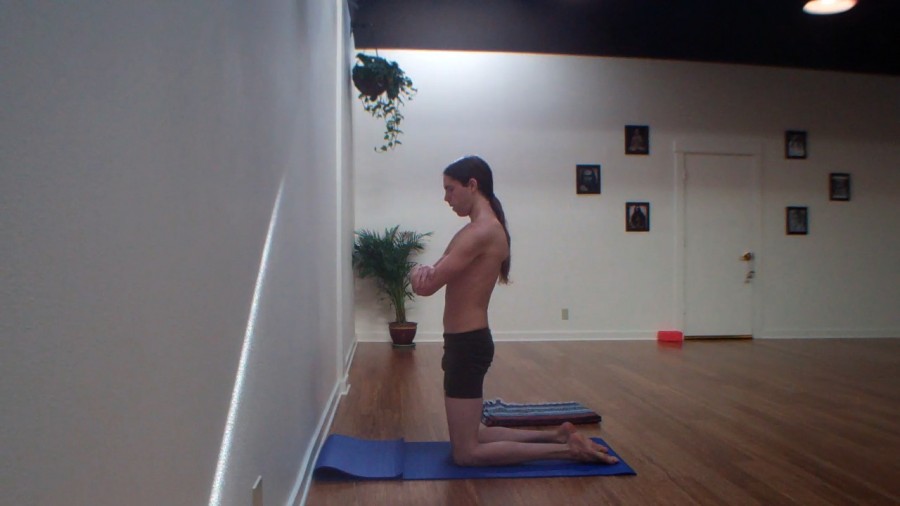
4. Release your forearms to your mat (or blanket) in front of you, sliding your palms out to form a triangular shape with your arms. Check to make sure that your palms are about 5-6 inches from the wall, adjusting if necessary. Now interlace your fingers, keeping your palms loose to help ground your wrists, and your thumbs pointing toward the ceiling.
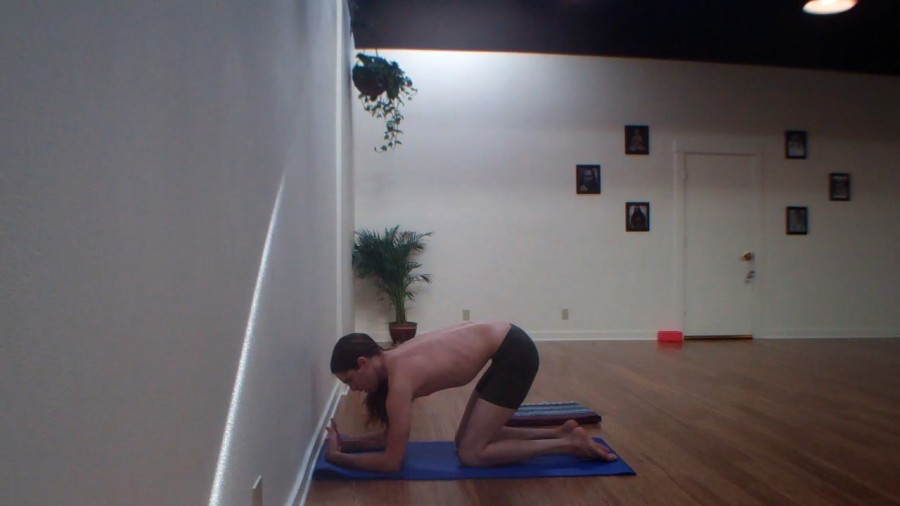
5. Rest the back of your head against the broad base of your thumbs, pressing your crown down into your mat. This will be a small circle on your head about the size of a quarter. You may have to adjust your head positioning a few times to find where your head and neck feel most stable.
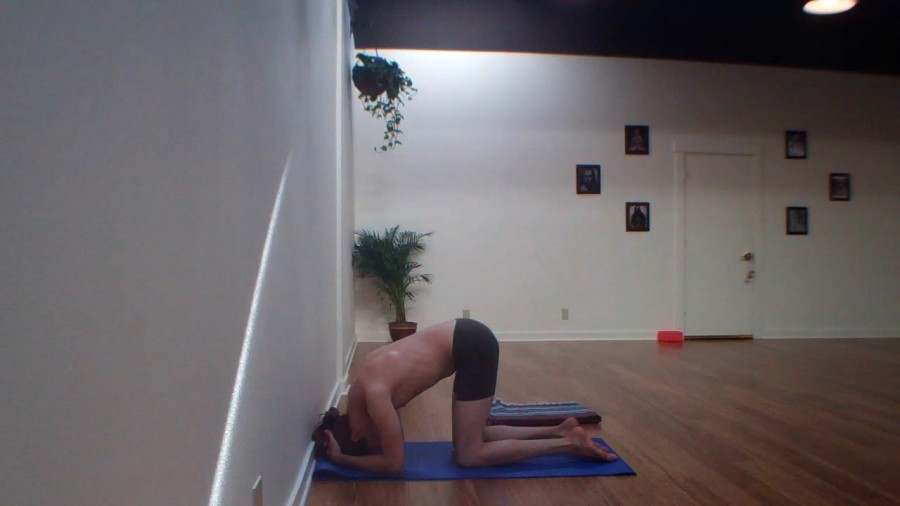
7. Now straighten your legs. Keeping your shoulders above your elbows, begin to walk your feet in one foot at a time until you sense that your hips are directly above your torso.
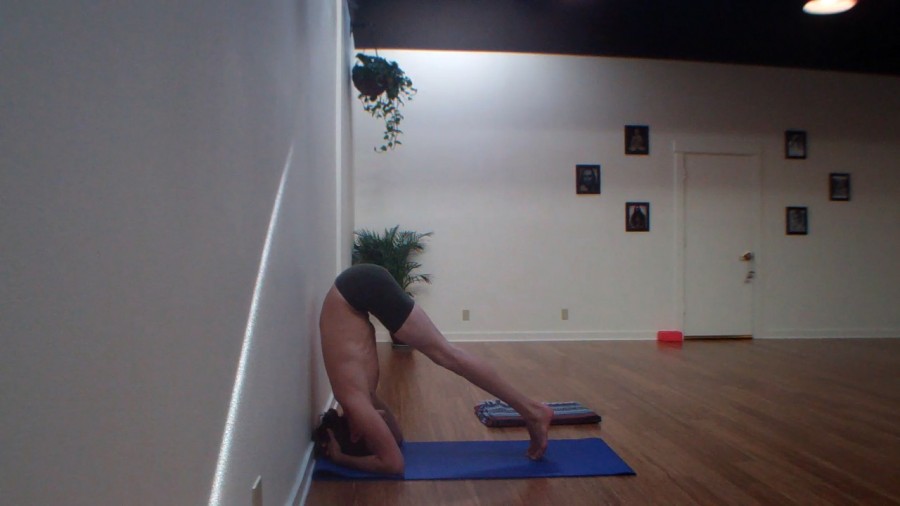
8. From here, there are several ways to lift off your mat. One way would be to bend both knees, drawing them in to your chest as close as possible, and with an exhale begin to slowly raise them overhead, resting both feet against the wall. An alternative that some students find easier would be to keep both legs straight, slowly extending either leg overhead as high as possible, and with an exhale lightly springing off the opposite foot, straightening the leg and releasing both feet to the wall.
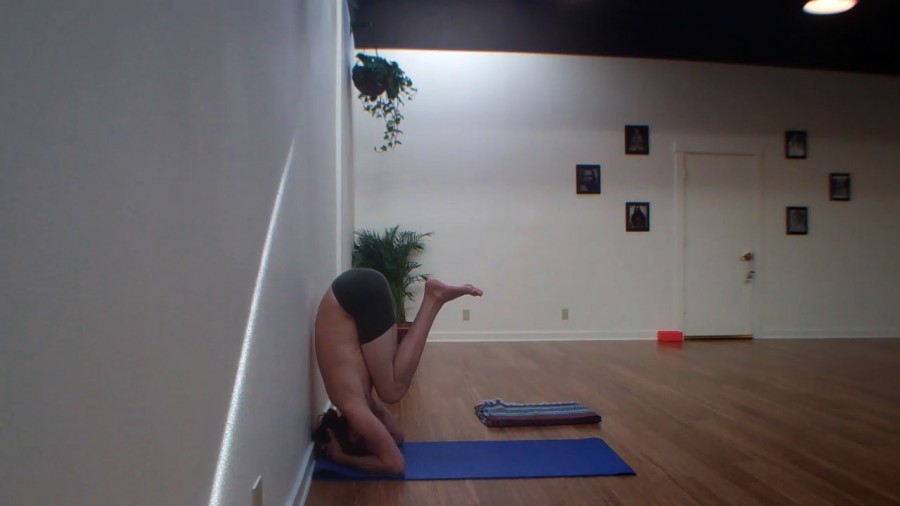
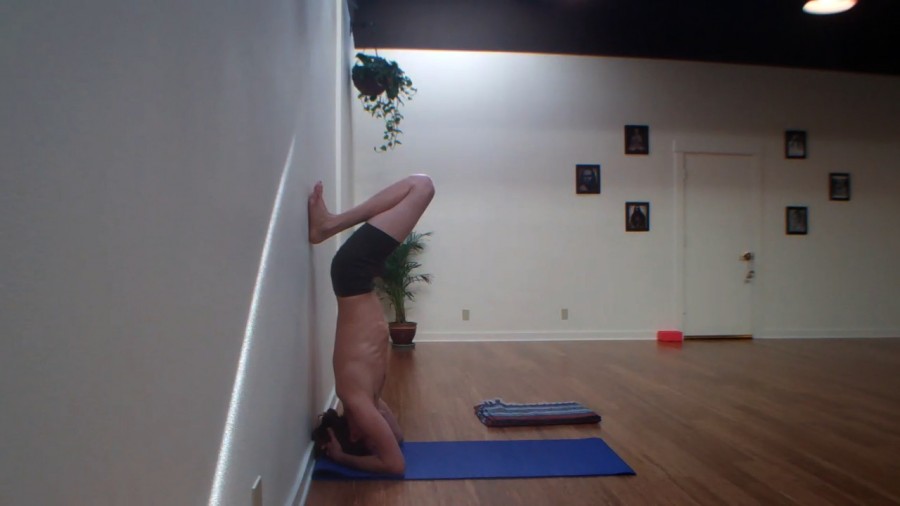
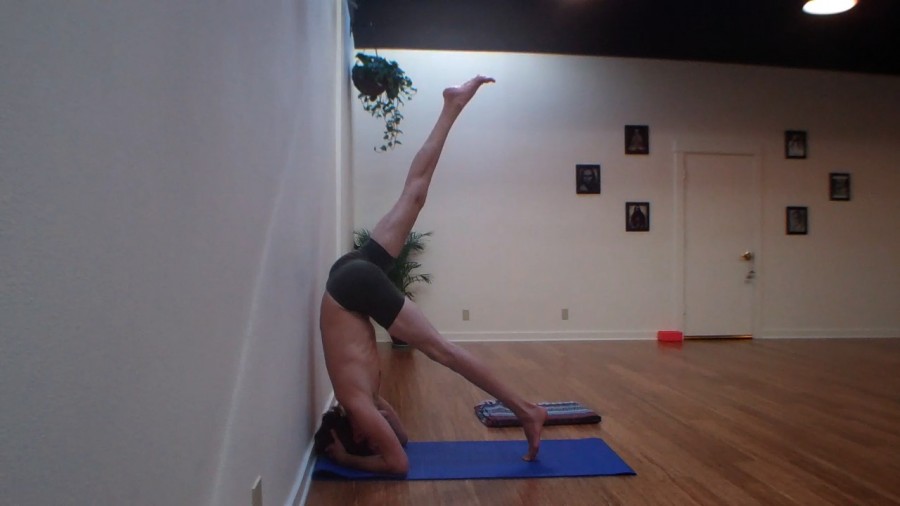
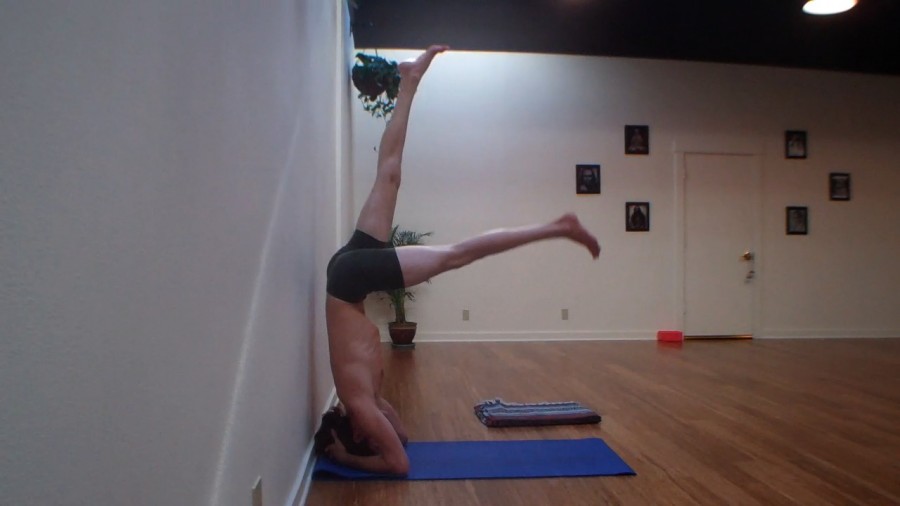
9. Once both feet are on the wall, if you feel comfortable, you can explore removing one foot from the wall at a time. This gradual approach will allow your neck and shoulders to adjust to the feeling of sending progressively more weight straight down through your crown.
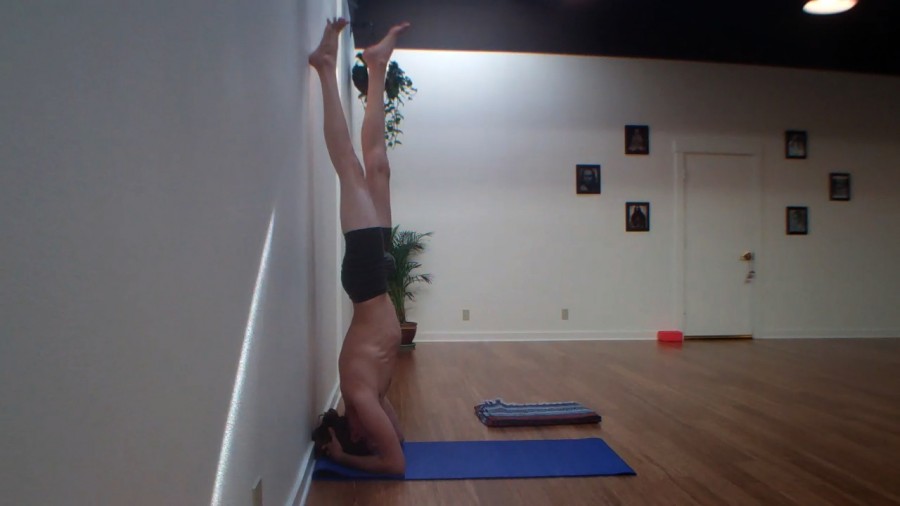
10. With practice, if you feel stable in your body lifting one foot off at a time, and your breath remains calm and steady, explore releasing both feet simultaneously and balancing. Appreciate that the worst thing that can happen here would be to fall on your feet! If that happens, of course you can always try again. But first, be sure to rest in child’s pose (balasana) for at least 3-5 deep breaths before setting up to lift off again. Resting in child’s pose gives your spine a chance to rest, returning to its natural curvature. Your arms can either be extended to help elongate your spine, or simply draped by your sides.
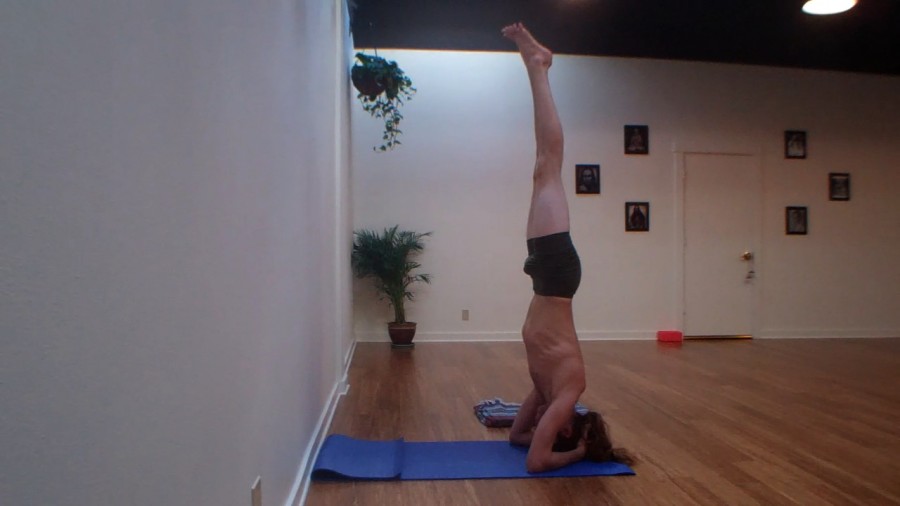
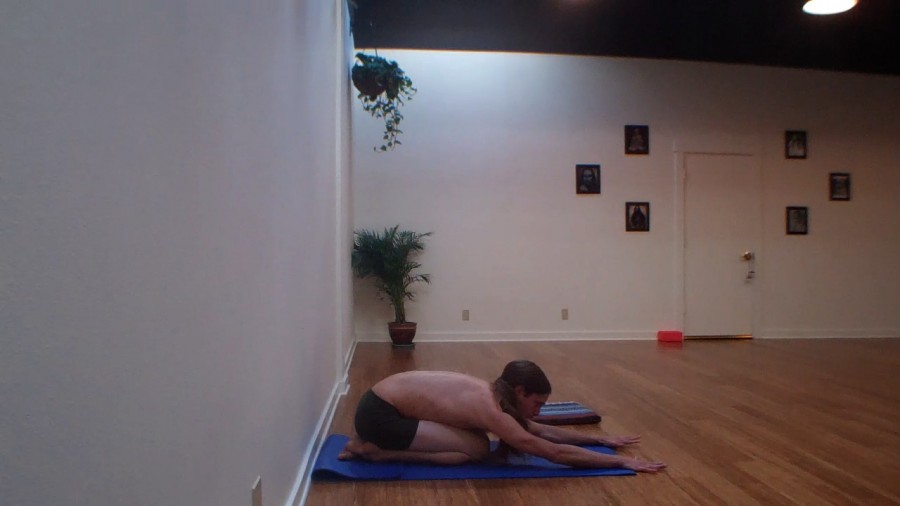
When you first begin to practice headstand, you may come out feeling tension in your neck, shoulders, and/or spine. This is due to the fact that your body is not used to standing upside down, so the muscles in your neck and shoulders need to be gradually trained to work in this way. For this reason, it is very important to A. always rest in child’s pose immediately after practicing headstand. If you come up to fast, you risk becoming dizzy, and possibly even fainting! B. when you do come up, do 2-3 neck rolls in both directions, moving slowly and in tune with your breath. This will help to work out any kinks in your neck, alleviating tension.
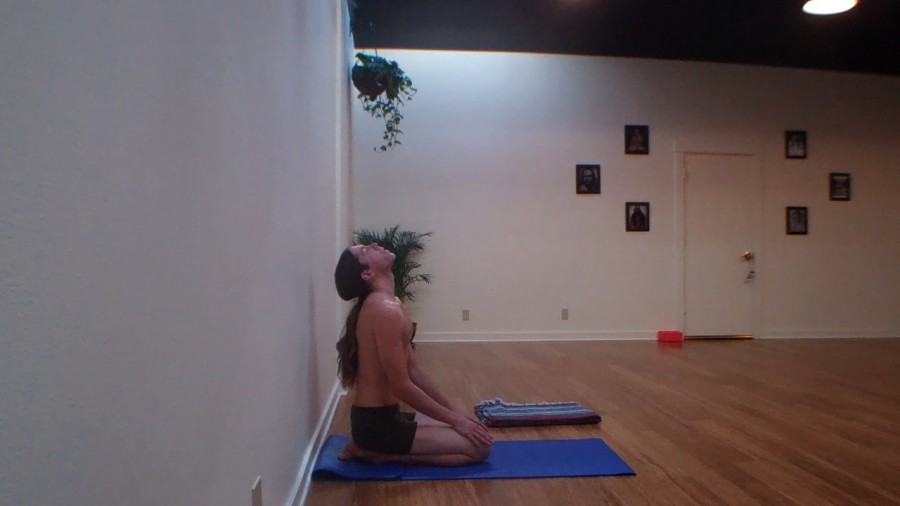
If you practice headstand regularly, eventually it will become as natural as standing on your feet! Your neck, shoulders, and spine will be strengthened, and you will feel most of your weight passing through your crown. You will feel comfortable spending progressively more time with your legs overhead, and the benefits mentioned above will become increasingly apparent, manifesting in your life in numerous ways. As always, proceed with sensitivity to your body, recognizing your strengths and weaknesses. Good luck, and have fun practicing!
(Video filmed at Everyday People Yoga in Eugene, Oregon)
